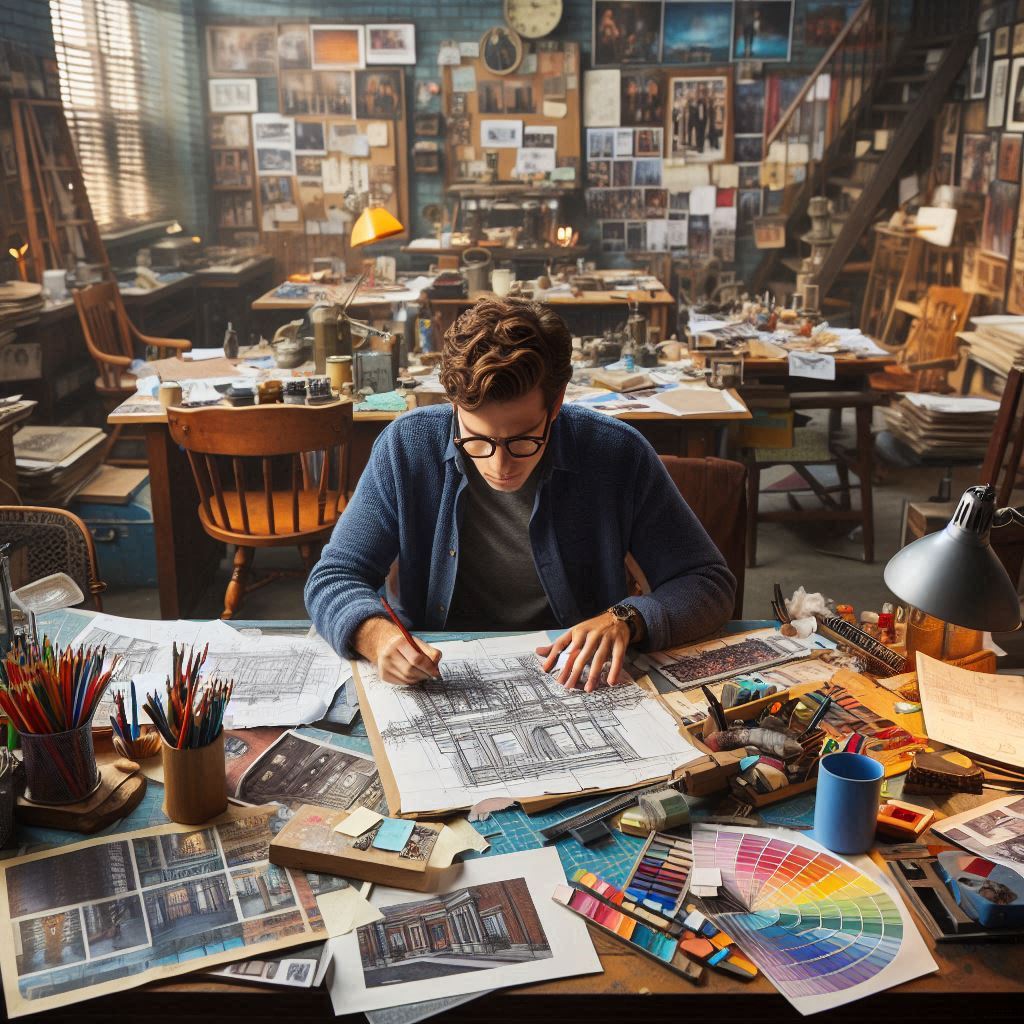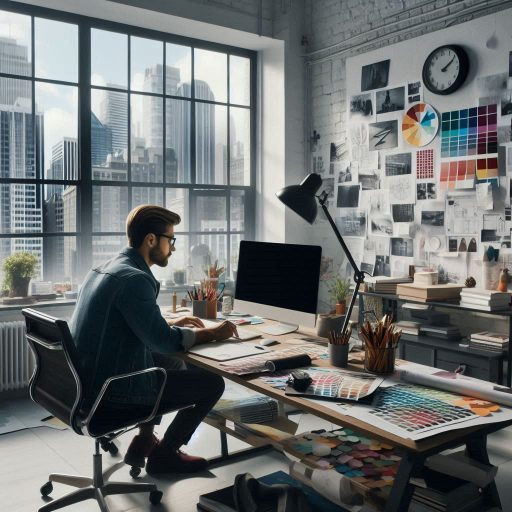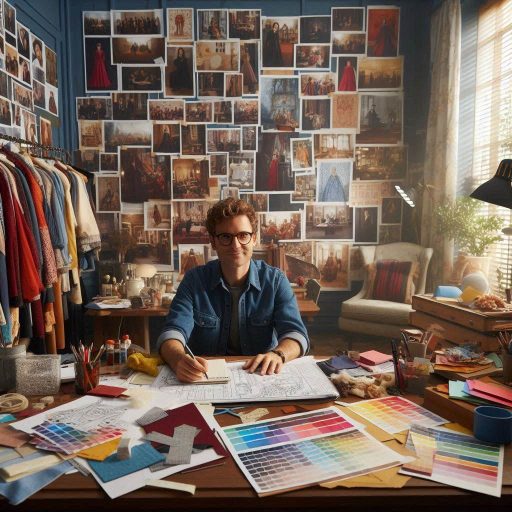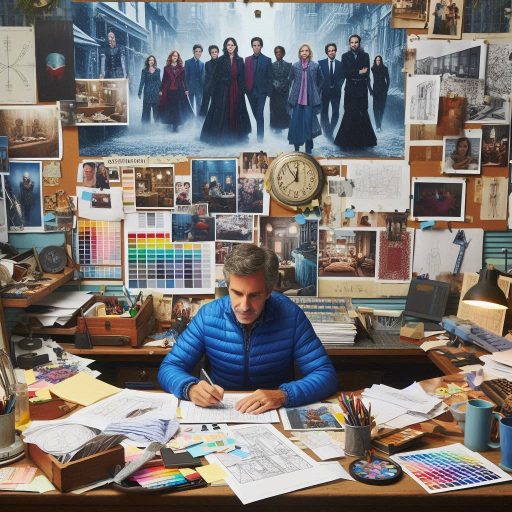Introduction
Sustainability in production design focuses on creating environmentally friendly and socially responsible sets for film, television, and theater.
Designers aim to reduce waste, use eco-friendly materials, and implement sustainable practices throughout the creative process.
The importance of sustainability in today’s world cannot be overstated.
With increasing environmental concerns, industries must adapt to limit their ecological impact.
Production design plays a key role in this transformation, as it involves significant resource consumption.
By prioritizing sustainability, designers can contribute to the preservation of natural resources while still delivering visually compelling projects.
Production design, when not managed responsibly, can have a considerable impact on the environment.
Building large sets often leads to excess material waste, and sourcing props or materials without regard to sustainability can further strain resources.
Additionally, certain practices can generate harmful emissions or pollutants that affect both the environment and the people involved in production.
Incorporating sustainable principles, such as reusing materials, sourcing locally, and minimizing energy consumption, can positively affect both the environment and society.
It allows for responsible storytelling while ensuring future generations benefit from a healthier planet.
Definition of Sustainability in Production Design
Defining Sustainability in Production Design
Sustainability in production design refers to creating film or television sets while minimizing environmental impact.
This practice involves using eco-friendly materials, reducing waste, and promoting energy efficiency.
Designers adopt sustainable methods to decrease the carbon footprint of their projects.
Sustainability extends beyond the materials used on set.
It also involves considering the long-term effects of production decisions.
By focusing on environmental responsibility, production designers can contribute to the industry‘s growing commitment to sustainability.
Incorporating sustainability into production design is a way to align creativity with environmental consciousness.
It allows designers to craft stunning sets while remaining mindful of ecological preservation.
Key Elements of Sustainable Production Design
Sustainable production design focuses on three primary elements: materials, waste management, and energy efficiency.
Each plays a vital role in reducing the environmental impact of a production.
First, the choice of materials is crucial.
Sustainable designers opt for recycled, upcycled, or locally sourced materials.
These materials reduce the need for new resources and lower transportation-related emissions.
Reusing set pieces from previous productions also helps limit waste.
Second, waste management is a central component.
Designers aim to minimize waste by creating sets that can be repurposed or recycled.
They work closely with the art department and construction teams to ensure materials are not needlessly discarded.
Composting organic materials and recycling metal, wood, and plastics are effective waste-reduction strategies.
Lastly, energy efficiency is a significant aspect of sustainability in production design.
Designers use energy-saving lighting solutions like LEDs to reduce electricity consumption.
They also consider the energy needed for heating and cooling on set, choosing more efficient systems when possible.
These key elements work together to ensure a production design process that prioritizes sustainability.
By focusing on materials, waste, and energy, designers can create environmentally friendly sets without compromising creativity.
Goals of Sustainable Production Design
The primary goal of sustainable production design is to reduce the ecological impact of film and television production.
This involves cutting down on waste, conserving energy, and using environmentally responsible materials.
Achieving sustainability doesn‘t just benefit the environment; it also sets a precedent for future productions.
Another important goal is fostering industry-wide awareness.
By incorporating sustainable practices, production designers can inspire others in the industry to do the same.
Sustainable production design can lead to a cultural shift, encouraging studios, directors, and crews to prioritize eco-friendly practices.
Financial savings are another goal of sustainable production design.
Using recycled materials and energy-efficient systems can significantly lower production costs.
Over time, these cost savings benefit both the production and the environment.
Lastly, creating lasting change is a vital goal.
Sustainable production design strives to set a standard for future generations of filmmakers.
By making sustainability a core value, the industry can ensure that environmental responsibility becomes a permanent fixture in the design process.
In short, sustainability in production design emphasizes eco-friendly materials, waste management, and energy efficiency.
These practices aim to reduce the environmental impact of film and television production.
By focusing on these elements, production designers can create beautiful sets while fostering long-term change for a greener industry.
Read: Top Skills Needed for a Successful Character Designer
Benefits of Sustainable Production Design
Various Benefits of Incorporating Sustainability in Production Design
Incorporating sustainability in production design brings numerous benefits to both filmmakers and the industry.
By prioritizing eco-friendly practices, production designers can reduce waste, minimize environmental impact, and contribute to long-term resource conservation.
Sustainable production design encourages the use of recycled materials, energy-efficient lighting, and reusable set pieces.
Sustainable practices also enhance creativity.
Designers are often challenged to find innovative ways to create visually stunning sets using fewer resources.
This creative problem-solving fosters a unique and resourceful approach to design, often resulting in more meaningful and impactful visuals.
Another advantage is the growing demand for sustainable film production.
Audiences and industry professionals increasingly prioritize sustainability, leading to positive public relations.
By showcasing environmentally conscious practices, production teams can align with the values of eco-conscious viewers and stakeholders.
How Sustainable Practices Can Lead to Cost Savings
Sustainable production design not only benefits the environment but also leads to cost savings.
Reusing set materials and repurposing props significantly reduces the need to constantly buy new resources.
This approach saves money on materials and minimizes construction time, leading to more efficient budgeting.
Energy-efficient lighting and equipment further reduce costs.
LED lighting, for instance, consumes less energy than traditional lighting options, lowering electricity bills.
Additionally, energy-efficient technology reduces maintenance costs, as these tools tend to last longer and require less upkeep.
Another cost-saving aspect of sustainability is the reduction in waste disposal expenses.
By reusing materials and recycling, production teams decrease the volume of waste they generate.
This reduces the cost of removing and disposing of excess materials, leading to a more streamlined and cost-effective production process.
Sustainable practices also open the door to potential tax incentives and grants.
Many regions offer financial incentives for productions that prioritize eco-friendly methods.
These savings can further offset initial costs and help keep production budgets on track.
Positive Impact of Sustainable Production Design on the Environment and Community
Sustainable production design positively impacts both the environment and the community.
By reducing the carbon footprint of productions, designers help combat climate change.
Using fewer natural resources, reducing emissions, and minimizing waste contribute to a healthier planet.
Environmentally conscious productions often collaborate with local communities, sourcing materials and services from nearby suppliers.
This approach reduces transportation emissions and stimulates local economies.
By supporting community businesses, productions foster goodwill and strengthen relationships with local vendors.
Sustainability also reduces the strain on landfills and ecosystems.
When fewer materials are discarded, there‘s less environmental pollution.
Designers who prioritize sustainability can help preserve natural landscapes and wildlife by minimizing harmful production practices.
Beyond the immediate environment, adopting sustainable methods also sets a positive example for the industry.
As more production designers embrace sustainability, they inspire other filmmakers to follow suit, leading to widespread environmental benefits.
This cultural shift within the industry can influence the future of filmmaking, making sustainability an integral part of production practices.
Incorporating sustainability in production design yields multiple benefits, including cost savings, environmental protection, and stronger community relationships.
As sustainable practices gain prominence, the positive impact on the industry and planet will only continue to grow.
Read: Career Paths in Ceramic Art and Design
Strategies for Implementing Sustainability in Production Design
Practical Tips for Integrating Sustainability into Production Design
Sustainability in production design is becoming increasingly important in the film and television industry.
Integrating eco-friendly practices starts with small but impactful changes.
Designers should prioritize sustainable materials and minimize waste throughout the production process.
One practical tip is to repurpose existing set pieces.
Instead of building everything from scratch, designers can reuse or modify props, furniture, and backdrops.
This approach reduces material waste and lowers production costs while maintaining quality.
Opting for digital designs can also minimize physical waste.
Designers can create virtual models and mockups before building full-scale sets.
This strategy helps avoid unnecessary construction and ensures resources are used only where needed.
Collaborating with other departments is another effective strategy.
Designers can work closely with costume and prop teams to source sustainable materials.
By aligning goals, departments can find eco-friendly alternatives and streamline resources.
Additionally, working with local vendors reduces the carbon footprint of transporting materials.
Sourcing materials locally supports sustainable production while also fostering community partnerships.
Reducing Waste and Energy Consumption in Production Design
Reducing waste in production design requires conscious planning.
Designers should assess the environmental impact of every phase, from pre-production to post-production.
Careful consideration of materials, energy use, and waste disposal can lead to more sustainable practices.
Energy consumption can be minimized by using energy-efficient lighting and equipment.
Switching to LED lights reduces power usage without sacrificing quality.
Designers can also encourage energy-saving practices on set, such as turning off equipment when not in use.
Construction waste is another area where designers can make an impact.
By planning set builds carefully, they can minimize excess materials.
Any leftover materials can be recycled or donated to reduce waste.
Moreover, choosing modular sets can reduce the need for new construction.
These sets can be easily assembled, disassembled, and reused across different productions.
Modular design not only cuts down on waste but also saves time and resources.
Designers can also implement a green waste management plan.
Recycling programs should be established on set to ensure materials like wood, plastic, and metal are properly sorted.
Composting organic waste from catering can further minimize landfill contributions.
The Importance of Using Eco-Friendly Materials and Technologies
Incorporating eco-friendly materials into production design is essential for reducing environmental impact.
Sustainable materials, such as reclaimed wood, recycled metals, and non-toxic paints, offer environmentally responsible alternatives.
These materials help lower carbon emissions and reduce resource depletion.
Designers can also explore innovative materials made from renewable resources.
Bamboo, cork, and other fast-growing plants provide durable, sustainable options for set construction.
These alternatives offer both aesthetic appeal and environmental benefits.
In addition to materials, eco-friendly technologies are transforming production design.
Virtual set design, for example, reduces the need for physical builds and minimizes material waste.
Green technologies like solar-powered lighting also help reduce energy consumption on set.
The film industry has a significant environmental footprint, making it critical to embrace sustainable practices.
By using eco-friendly materials and technologies, production designers can create visually stunning sets while reducing their impact on the planet.
Integrating sustainability into production design requires practical strategies, from reducing waste to using renewable materials.
Designers have a responsibility to minimize environmental impact while maintaining creative excellence.
Sustainable practices not only benefit the planet but also contribute to more efficient and cost-effective productions.
Read: Freelance Character Design: How to Get Started

Case Studies of Successful Sustainable Production Design
Examples of Companies Implementing Sustainable Production Design
Several companies and projects have successfully embraced sustainable practices in production design.
One notable example is Game of Thrones, where the design team reused sets and materials to reduce waste.
They also sourced eco-friendly materials whenever possible, showcasing their commitment to sustainability.
Another example is the film Mad Max: Fury Road.
The production team used recycled and repurposed materials for many set pieces and props.
This practice significantly reduced the environmental impact of the film’s extensive production.
Netflix has also made strides in sustainable production with shows like The Crown.
The show‘s production team prioritized reusing costumes, sets, and props.
They also focused on reducing carbon emissions by implementing green technologies on set.
These companies serve as examples of how sustainable production design can be integrated into large-scale projects without sacrificing creativity.
Impact of Sustainable Production Design
Sustainable production design has a positive impact on both businesses and the environment.
For companies, it offers cost savings by minimizing waste and reusing materials.
Projects like The Crown have proven that sustainable practices can lower production costs without compromising on quality.
Additionally, sustainability in production design enhances a company’s reputation.
Audiences and investors are increasingly concerned about environmental responsibility.
Implementing green practices boosts a company‘s image and attracts eco-conscious audiences.
Productions like Game of Thrones received praise for their efforts to minimize their environmental footprint, which strengthened their brand.
From an environmental perspective, sustainable practices significantly reduce waste and pollution.
Reusing sets and materials prevents excessive resource consumption, which is common in the film industry.
Productions like Mad Max: Fury Road demonstrated that reducing environmental impact doesn’t hinder creative expression.
Sustainable production design also leads to energy savings.
By using eco-friendly lighting and solar power, companies reduce their energy consumption and lower carbon emissions.
This shift not only benefits the environment but also promotes long-term financial savings.
Overcoming Challenges in Sustainable Production Design
Sustainable production design does come with challenges, but companies have found innovative ways to overcome them.
One major challenge is the cost of implementing sustainable technologies.
Solar panels, eco-friendly materials, and energy-efficient lighting can be expensive upfront.
To address this, productions like The Crown and Game of Thrones focused on long-term savings.
By reducing material waste and energy costs, they balanced out the initial investment over time.
Another challenge is sourcing sustainable materials without compromising design quality.
Productions often face tight deadlines and limited supplier options.
In response, companies have built partnerships with eco-friendly suppliers and reused existing resources creatively.
The need for extensive planning is another hurdle.
Sustainable production requires early collaboration between production designers, suppliers, and other departments.
To overcome this, projects like Mad Max: Fury Road incorporated sustainability into the pre-production process.
This ensured that eco-friendly practices were a core part of the project from the start.
Sustainable production design offers significant benefits for businesses and the environment.
Productions like Game of Thrones and Mad Max: Fury Road demonstrate that eco-friendly practices can enhance creativity and reduce costs.
Despite challenges, companies have found innovative solutions to implement sustainability in their projects, paving the way for a greener future in the entertainment industry.
Read: Career Paths: Becoming a Professional Character Designer
Trends in Sustainable Production Design
Current Trends and Innovations in Sustainable Production Design
Sustainability has become a key focus in modern production design.
Designers are adopting eco-friendly practices to reduce environmental impact.
One major trend is the use of repurposed materials.
By recycling sets and props, designers can minimize waste and cut costs without sacrificing quality.
Designers are also shifting towards energy-efficient lighting.
LED technology has replaced traditional incandescent lighting, reducing energy consumption on set.
This move lowers carbon footprints while maintaining high production standards.
Another innovation is the use of sustainable building materials.
Designers are choosing non-toxic, biodegradable, and locally sourced materials to construct sets.
These choices not only benefit the environment but also enhance the overall safety and health of the crew.
Water conservation practices are also gaining traction.
Many designers are implementing closed-loop systems, recycling water used in production.
This trend ensures that natural resources are preserved throughout the filmmaking process.
Overall, these sustainable trends are reshaping production design, making it more environmentally conscious without compromising creativity or aesthetic appeal.
How Technology Is Influencing Sustainable Practices in Production Design
Technology plays a crucial role in driving sustainable practices in production design.
Digital tools are transforming how designers approach their work, from pre-visualization to set construction.
For instance, virtual design platforms allow teams to visualize and adjust set designs without wasting physical materials.
3D printing technology is also making an impact.
Designers can create specific props and set pieces with less material waste.
3D printing enables precision and reduces the need for excess inventory, which ultimately decreases production waste.
Additionally, software advancements have improved resource management.
Programs can track and optimize material usage, helping designers plan more sustainably.
These tools ensure that only the necessary amount of materials is used, reducing excess and waste.
Technology is also driving innovation in energy consumption.
Automated lighting systems, for example, adjust brightness and color temperature based on need.
This reduces power usage during production without compromising lighting quality.
By integrating technology into sustainable practices, production designers can significantly lower their environmental impact.
The blend of innovation and environmental responsibility is reshaping how films are made.
Emerging Concepts and Ideas in the Field of Sustainable Production Design
Several emerging concepts are revolutionizing sustainable production design.
One idea gaining traction is circular set design, where sets are built with the intention of being reused.
This approach encourages designers to create modular, durable sets that can easily be repurposed for future productions.
Another concept is green certification for film sets.
Just like buildings, sets can now meet sustainability standards, earning certifications for eco-friendly practices.
This not only promotes responsible design but also raises awareness about environmental issues within the industry.
Biophilic design is also an emerging trend, incorporating natural elements into set designs.
By using living plants and natural light, designers create environmentally harmonious spaces that align with sustainability goals.
This approach not only benefits the environment but also enhances the well-being of the crew.
Finally, decarbonization initiatives are becoming more prevalent in production design.
This involves reducing or offsetting carbon emissions during production by utilizing green energy and eco-friendly transportation methods.
In summary, emerging ideas in sustainable production design are transforming the industry.
As more designers embrace these concepts, the path toward a more eco-conscious film industry becomes increasingly attainable.
Transform Your Career Today
Unlock a personalized career strategy that drives real results. Get tailored advice and a roadmap designed just for you.
Start NowChallenges and Limitations of Sustainable Production Design
Common Challenges and Limitations Faced by Designers and Producers When Implementing Sustainable Practices
Sustainability in production design presents unique challenges for designers and producers.
One common issue is the availability of eco-friendly materials.
Designers often struggle to find sustainable alternatives that meet the visual and functional requirements of a project.
Additionally, using such materials can complicate the design process, as they may not always perform as well as traditional options.
Another challenge lies in balancing sustainability with creative vision.
Designers may face limitations in creating elaborate sets if they must prioritize eco-friendly practices.
Budget constraints can also impact sustainable choices, as sustainable materials and practices are sometimes more expensive.
Designers and producers often find it difficult to justify the added costs while maintaining the production‘s overall aesthetic and integrity.
Time constraints add another layer of difficulty.
Sustainable practices may require more time for sourcing materials, repurposing sets, or reducing waste.
In a fast-paced production environment, these practices may not always align with tight deadlines, leading to compromises.
Regulatory Hurdles and Economic Constraints Associated with Sustainable Production Design
Regulatory hurdles also pose significant challenges to sustainable production design.
Different regions may have varying regulations regarding waste management, environmental impact, and sustainability certifications.
Navigating these regulations can be complex and time-consuming, especially for large-scale productions that shoot in multiple locations.
Designers and producers must ensure that their practices comply with local laws, which can limit their flexibility.
Economic constraints are another key issue.
Sustainable materials and practices can come with higher upfront costs, which can strain production budgets.
While the long-term benefits of sustainability are evident, many producers operate within tight financial margins, making it difficult to justify these initial expenses.
This can discourage production teams from adopting more eco-friendly methods, even when they are committed to reducing their environmental impact.
Additionally, funding and incentives for sustainable production are often limited.
While some organizations and governments offer tax breaks or grants for green practices, these resources are not always available.
Producers must navigate these financial limitations while still striving to maintain high production values.
Offer Potential Solutions to Overcome These Challenges
To overcome these challenges, production teams can explore creative solutions to integrate sustainability without compromising quality.
One approach is to prioritize repurposing and reusing materials from previous productions.
This not only reduces waste but also saves money, making it a more economically viable option.
Designers can incorporate modular and adaptable set pieces that can be reused or modified for future projects.
Producers can also collaborate with local vendors and suppliers to source sustainable materials, reducing transportation costs and emissions.
Building strong partnerships with these suppliers can lead to long-term cost savings and help streamline the process of finding eco-friendly alternatives.
Regulatory hurdles can be addressed through proactive research and planning.
Production teams should familiarize themselves with local regulations early in the pre-production phase to avoid complications.
Engaging with sustainability experts or consultants can also help navigate these legal and logistical challenges.
Lastly, advocating for industry-wide change can help reduce economic constraints.
Increased demand for sustainable practices can drive down costs over time, making green production design more accessible.
Additionally, raising awareness about the importance of sustainability in film and TV production can encourage more investment and support from studios, governments, and organizations.
While sustainable production design presents challenges, creative solutions and industry-wide support can help overcome them.
Collaboration, planning, and resourcefulness are key to making sustainability a viable option for future productions.
Explore Further: Future of Lighting Design in Smart Homes
The Future of Sustainable Production Design
The Future of Sustainable Production Design and Its Impact
Sustainable production design is transforming the film and television industry.
Designers are increasingly prioritizing eco-friendly practices in set construction, materials, and processes.
This shift is not only reducing waste but also influencing the future of production.
As environmental concerns grow, sustainable design will become the norm in the industry.
Productions will focus more on reducing their carbon footprints.
Energy-efficient lighting, reusable sets, and recyclable materials will shape the production landscape.
Moreover, sustainable design is likely to influence the visual language of future films and TV shows.
Audiences may start to expect greener sets and environmentally conscious designs as part of storytelling.
The impact of this shift will extend beyond aesthetics, affecting the entire production pipeline.
Production companies will benefit from lower costs and enhanced reputations by adopting sustainable practices.
Green solutions, such as solar-powered sets or digital workflows, can significantly reduce expenses over time.
Sustainability is becoming a key factor in both financial and creative decision-making.
The Growing Demand for Sustainable Products and Services
The demand for sustainable products and services is rising in the production industry.
Audiences are increasingly aware of environmental issues, which has influenced the industry‘s priorities.
Producers now seek out suppliers that offer eco-friendly materials and services.
The use of sustainable materials in set design has become a competitive advantage.
Productions that embrace green practices attract both talent and audiences who value environmental responsibility.
As more stakeholders demand sustainability, production designers must respond with creative, eco-friendly solutions.
Incorporating recyclable, biodegradable, and renewable resources into set design is no longer a niche practice.
It is becoming a necessity.
Producers are recognizing the long-term benefits of investing in sustainability.
Sustainable products and services help companies stay ahead of regulations while meeting audience expectations.
Consumers also play a role in driving this demand.
Viewers want content that reflects their values, including environmental consciousness.
This shift in audience preferences pushes productions to be more responsible with their resources.
The Role of Designers, Producers, and Consumers in Shaping the Future
Designers, producers, and consumers all have essential roles in shaping the future of sustainable production design.
Designers must continue to innovate and find creative ways to implement sustainable materials and processes.
Their vision sets the tone for greener productions.
Production designers can collaborate with eco-friendly suppliers and incorporate sustainable technologies into their workflows.
By leading these efforts, designers can set industry standards and influence the next generation of productions.
Producers, as decision-makers, play a crucial role in implementing sustainability initiatives.
They must prioritize eco-friendly choices during budgeting and production planning.
Producers also have the power to encourage sustainable practices across all departments.
Consumers are increasingly demanding content that aligns with their environmental values.
Their influence is encouraging studios and networks to adopt sustainable production methods.
Audiences are becoming more selective, rewarding environmentally responsible productions with their viewership and support.
Sustainable production design is rapidly evolving and will shape the future of the industry.
The growing demand for eco-friendly products and services is transforming how films and television shows are created.
Designers, producers, and consumers all contribute to driving this change.
Together, they are helping the entertainment industry move towards a more sustainable, environmentally responsible future.
Find Out More: How to Conduct Usability Testing in UX/UI Design
Conclusion
Sustainability in production design has become increasingly important in the entertainment industry.
The blog post highlights the need for eco-friendly approaches in designing sets, props, and costumes.
Designers are shifting toward using recyclable materials, reducing waste, and opting for energy-efficient lighting.
Sustainable production design not only benefits the environment but also reduces costs.
Reusing materials and minimizing waste saves money while lessening the ecological footprint of a production.
It also demonstrates a commitment to social responsibility, encouraging others in the industry to follow suit.
The blog emphasizes that sustainability doesn‘t limit creativity.
In fact, it often inspires innovative solutions.
Designers can find new ways to repurpose old materials or use digital tools to reduce physical waste.
The importance of sustainability in production design extends beyond film and television.
It sets a positive example for viewers and creates awareness about eco-friendly practices.
By embracing sustainability, designers contribute to a greener future.
Readers are encouraged to incorporate sustainable practices into their own work and daily lives.
Whether by recycling, reducing energy use, or supporting green businesses, everyone can make a difference.
As sustainability becomes more central to production design, let‘s all take steps to protect the environment.




